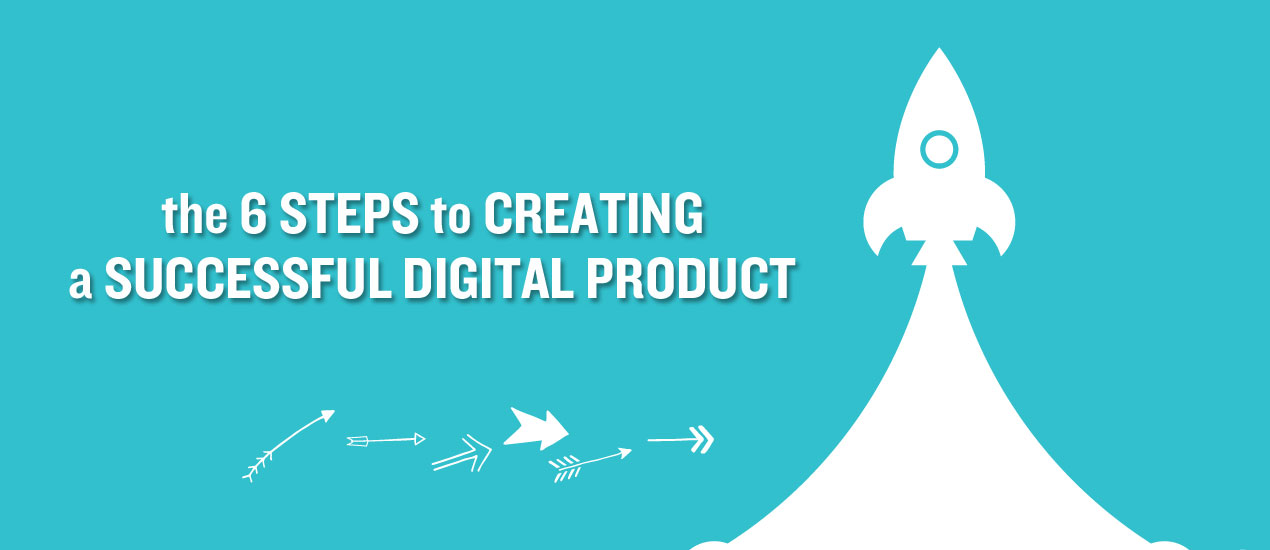Blog

The 6 Steps to Creating a Successful Digital Product
Digital Product Development Process
When creating a digital product, whether its an app or simple website, it is important to follow a consistent process in order to produce a consistently successful product. This is going to be a high-level overview of a process that can be adjusted to scale successfully to any project size and complexity.

Step One: Discovering the Problem
Firstly, it is the UX team’s job to understand the problem that is going to be solved. This part of the project involves meetings with the client or product owners, researching the competitive landscape, performing business analysis and analyzing any data that can be provided by previous iterations analytics. When it comes down to a digital product, like a website, it is also important to understand the people using the product, why they are using it and the type of technology they are comfortable with, as this will help the UX team define the best answer to the problem’s question.
Step Two: Defining the Best Answer
Next, the UX team is responsible for using the information discovered in step one to come up with the best solution to the problem discovered. Generally speaking, this second phase is marked with lots of sketches and initial concepts that can be quickly tested and iterated upon to drive towards the best answer to the problem. Wireframing, storyboarding, site-mapping (and information architecture), sketching and whiteboarding are routine elements that make up this phase of the project.
Step Three: Designing the Solution
Typically the design phase is what most non-industry folks picture when they think of when they hear digital product design. This is when the solution that was defined in Step two is crafted into a form that resembles a completed digital product. This means applying branding elements and styles to the structures defined in the wireframes, crafting a seamless digital experience that feels very much a part of the brand. This third phase is also when interaction design is created and generally involves working closely with the development team to ensure a seamless handoff into the next phase, development.
Step Four: Developing The Product
The fourth step in this digital product creation process is the actual building of the application using code, also known as development. Here the final designs that were crafted in step three are turned into front-end code (HTML, CSS & JavaScript) and hooked into back-end databases, CMS’s or APIs. Development is also when the actual interaction design is implemented, as well as any transition or loading animations, giving the digital product some life and allowing it to be tested in terms of user delight.
Step Five: Deploying the Final Product
The fifth and final production step of the process is deployment. Here, the final developed product is transitioned from its development environment to the live internet, where it can be accessed by the masses. Generally, this migration is taken care of via the modification of the Domain Name System (DNS), pointing URLs to their correct indexes. This phase can be completed with relative ease, however, a number of situations can arise when moving digital hosting and each deployment should factor in time to allow for bug fixes and code adjustments.
Step Six: Optimization (Constantly Improving the Product and Process)
The final step, optimization, isn’t a typical phase of the digital product production process. This is because Optimization should take place throughout the project and takes a number of different forms. In the initial discovery phase, optimization takes the form of user surveys and interviews to test the assumptions the team is making while performing research. In the second and third steps, it takes the form of prototype user testing, allowing users to interact with wireframes and mockups to test concepts and workflow ideas. In development and deployment, optimization takes the form of quality assurance (QA) testing, making sure to note and quash bugs as they are discovered. Finally, optimization even takes the form of a project post-mortem, analyzing the overall project to see how elements of the process can be improved to provide solid digital solutions in the future.